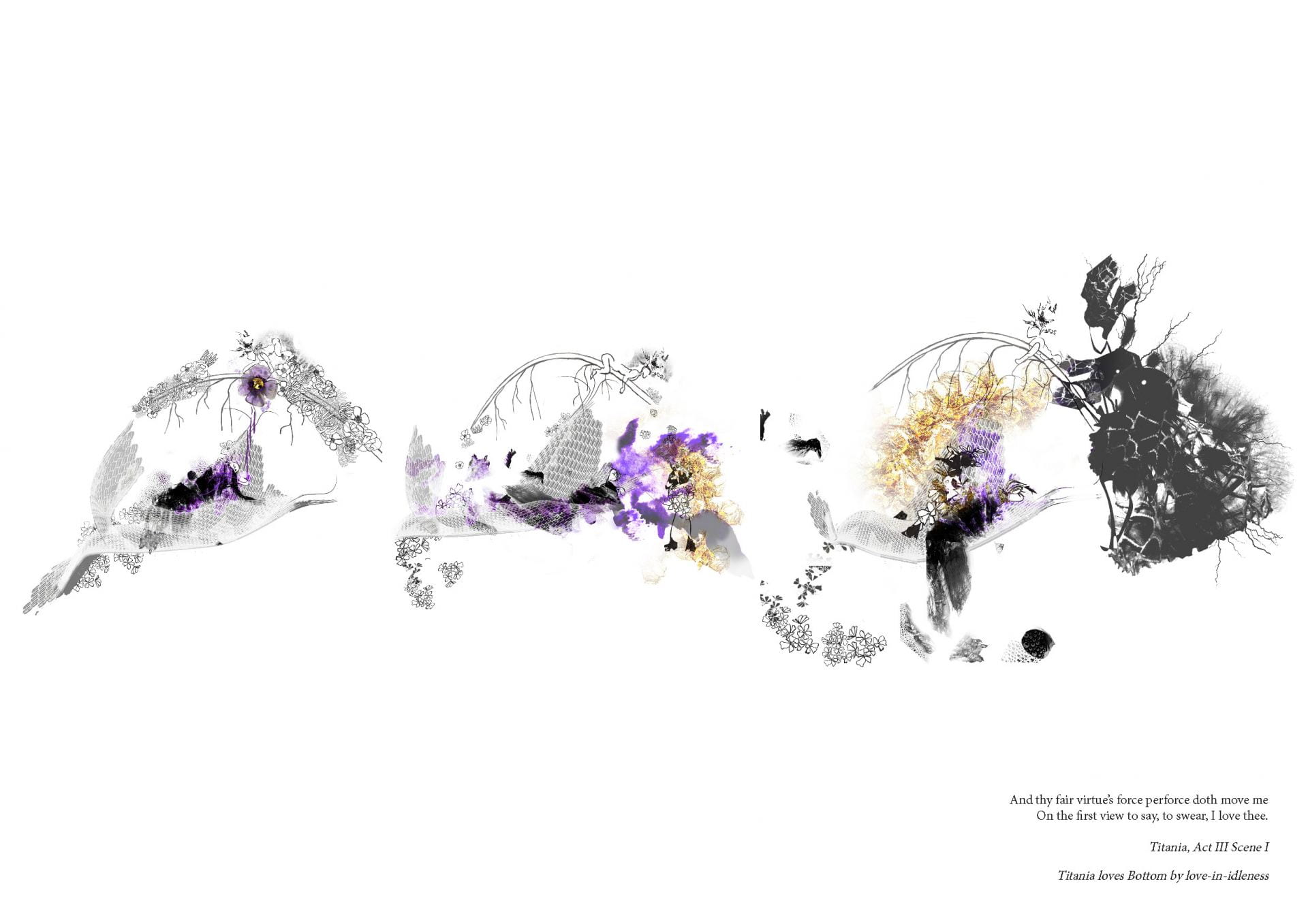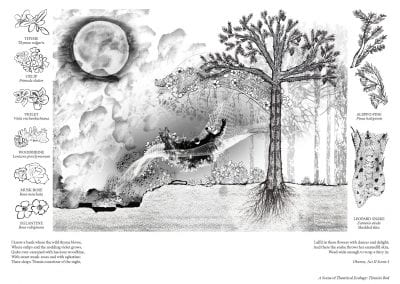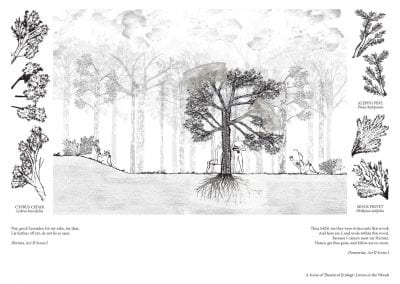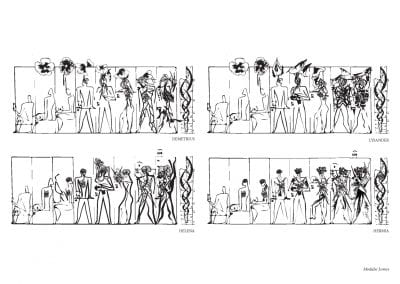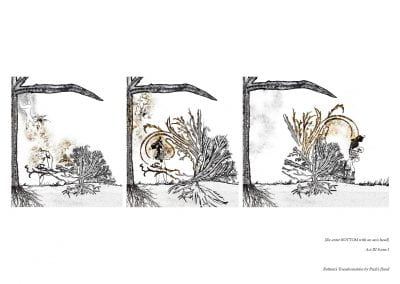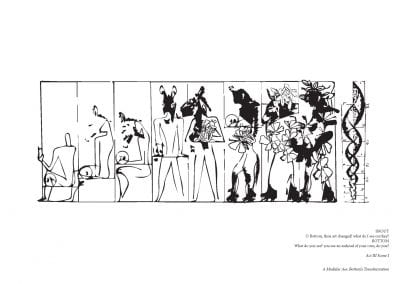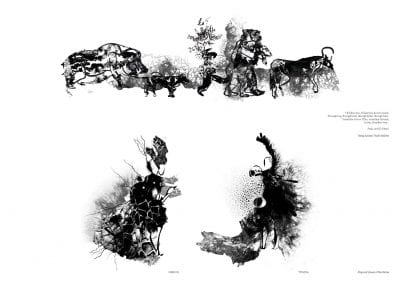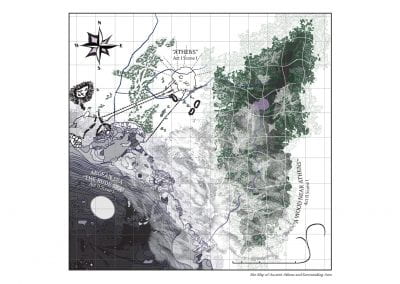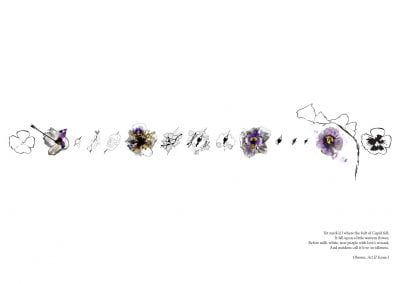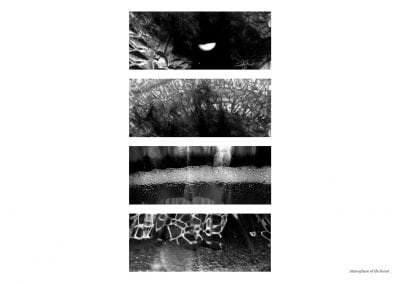Victoria Gancheva.
Tutor: Jeremy Treadwell.
This project seeks to create a Theatrical Ecology of William Shakespeare’s A Midsummer Night’s Dream. It is a drawing-based exploration across knowledge systems, creating a new reading of the play by navigating between different disciplines’ orthodoxies. It considers moments of transformation through an ecological system mindset and depicts them using an architectural drawing lens, with keen awareness of its own improbable theatricality.
The project is presented as a collection of images organised into chapters, beginning with temporal modelling of the setting’s turbulent seasonal changes, and leading into drawings of key transformations (integrating analogue and digital techniques). These processes are drawn out into precarious states, underpinned by theories of becoming, ‘becoming animal’ and futurity. The play positions the forest as a magical place facilitating chaos and emancipation, creating an opportunity to challenge anthropocentric architectural knowledge that ‘others’ nature. Forest elements are cut through in section, becoming spatial events involved in characters’ transformations; elevations evoke a theatrical proscenium. Shakespeare’s words are directly incorporated through adapted ecological drawing. Sequential drawing invokes narrative temporality, which is also used to reinterpret Le Corbusier’s ‘modular man’: all character transformations, internal and external, are given physical form, creating new bodily presences with which to interrelate with space.
